Visuals from Analysys Mason/Internet Society report highlight the need to lower Internet access barriers
An amazingly thorough report from consultancy Analysys Mason and global organization The Internet Society discusses how to improve African connectivity. The authors first assess the Internet access value chain and then compare Internet across African countries. After providing this framework, they go on to discuss successes and failures of connectivity (international and national) plus ISP markets and policy environment. Lastly, the report suggests how to remove policy roadblocks, how to promote investment, and how to motivate leaders to invest in Internet policy creation.
Fortunately, the complex themes are simplified with sharp visuals.
Broadband prices vary greatly across countries. High usage plans are relatively the same price per gigabyte in most areas. Low usage bundles are wildly expensive outside of East Africa.
Most coastal nations have 2 or more submarine cables landed. Eritrea and Guinea-Bissau have none.
Of 20 examined nations, most have full competition of Internet services (Malawi and Burkina Faso do not). Nearly half have a state-owned incumbent operator. An autonomous telecommunications regulatory body is present in all but Burundi and South Africa.
Very loosely, the number of Internet users increases with the economic strength of a nation. Still, there are too many exceptions to the rule. Kenya and Nigeria have a higher number of users given their GDP per capita. Botswana, Namibia, and South Africa have high GDP per capita, but relatively low numbers of Internet users.
International connectivity via satellite is expensive and keeps costs high compared with the same connectivity via submarine cables.
Low Internet tariffs do not mean more Internet users. Just compare Kenya (low tariff, high users) with Cote d’Ivoire (low tariff, low users). On the other end, Zimbabwe has very high tariffs but still has a competitive number of Internet users. Tariffs in Southern Africa are noticeably more expensive than other regions.
Local Internet speeds are not bad (generally from 1Mbit/s to 3Mbit/s). But, a lack of local content and local peering means the real speed is reflected when connecting to USA. In this case, speeds drop to under 1 Mbit/s in nearly every country.
Also notable:
- Over 24Gbit/s of submarine fibre capacity has been added since 2011.
- Upwards of 80% of mainland national borders are crossed by at least one fibre link.
- As much as 36% of SSA’s population lives more than 50 kilometers from a fibre network node. Satellite serves much of this group.
Source: Robert Schumann, Michael Kende, “Lifting barriers to Internet development in Africa: suggestions for improving connectivity,” Analysis Mason and The Internet Society, May 2013. Licensed under the Creative Commons Attribution – NonCommercial – ShareAlike 3.0 Unported License.






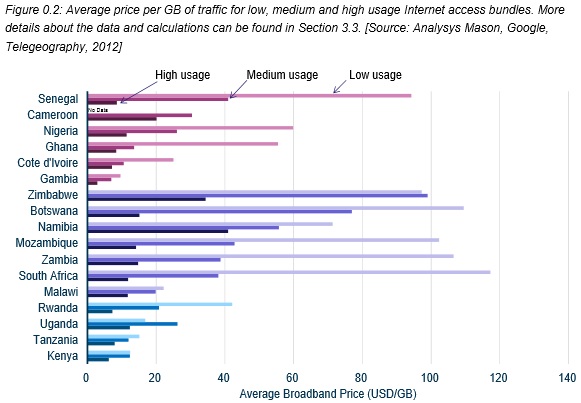
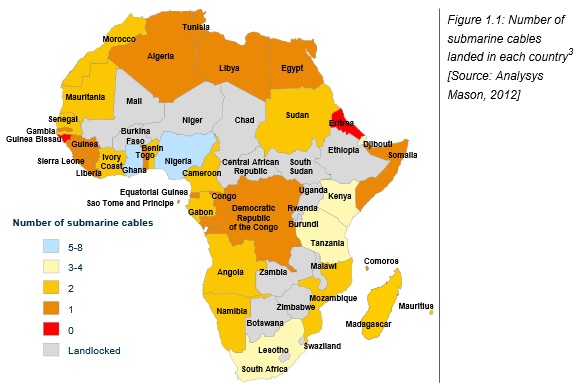
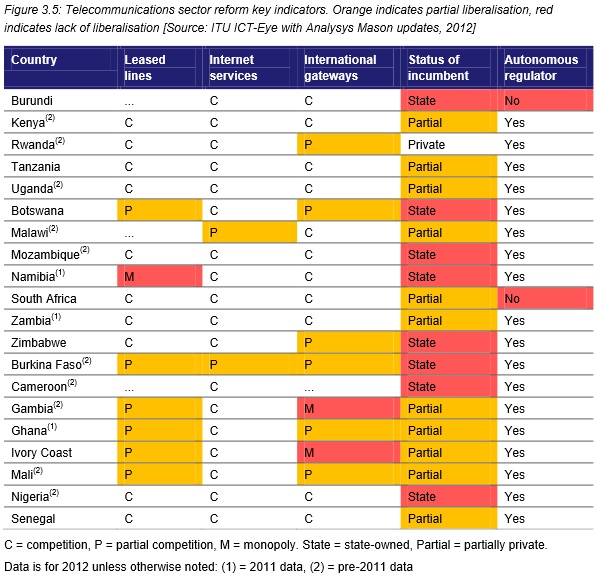
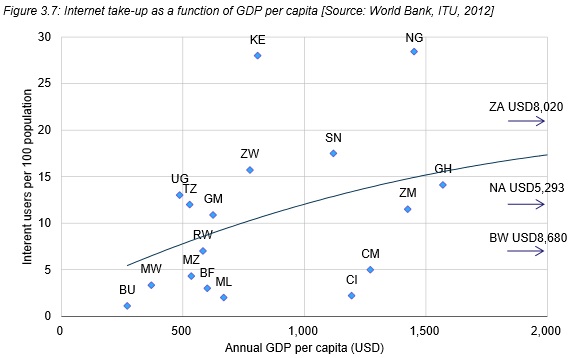
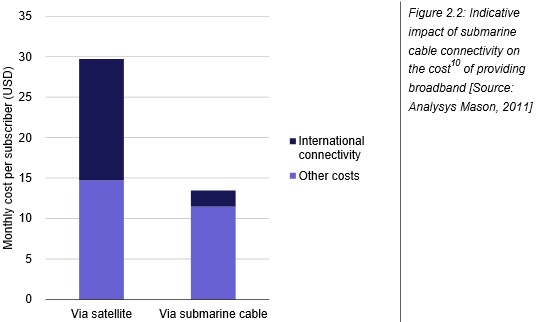
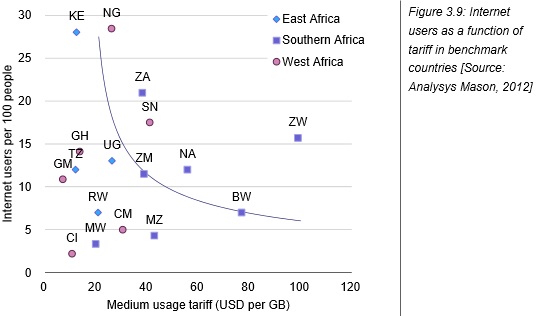
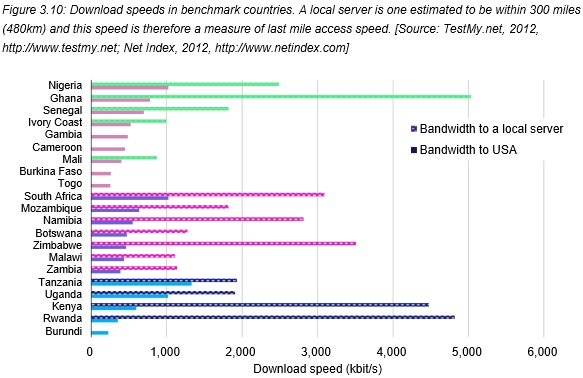






 Twitter
Twitter Facebook
Facebook Pinterest
Pinterest
It’s hard to take seriously a report that thinks South Africa does not have an autonomous sector regulator! Did they mistake us for Swaziland???
Odd indeed…Looks like page 20 explains their rationale on ICASA: “All countries except South Africa and Burundi report a separate regulator able to make decisions autonomously from the government.”